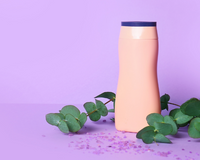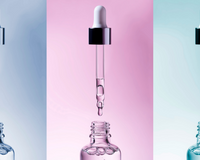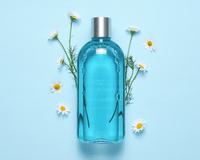Consider how your professional hair would look if you didn't use shampoo. With the oils produced by your scalp and the conditioners you use, unwashed hair gets dull, oily, and even stinky. When shampoo is mixed with water, it foams up and softens the hair and scalp (thanks to the presence of rich ammonium sulfate and sodium sulfate), removing debris, produced oils, and styling agent residues. Softeners are foam washed and new ingredients are added. Foam aids in the removal of dirt. The shampoo cleanses all filth from your hair, leaving it clean, lustrous, and full. Sulfates are such strong cleansers that they remove not just debris, oil. Thus, dead skin from your hair, but also the natural oils in your scalp. Natural oils on the scalp keep the hair moisturized. When these oils are removed from the hair, it loses moisture.
Because shampoos strip the hair of its natural moisture, if you don't follow up with conditioner, your hair will remain coarse and dry. Creams help the hair by providing natural lubrication and keeping the surface smooth with ingredients like dimenticon and tricetylmonium chloride. It protects professional hair from splitting, tangled hair from breaking, and keeps hair soft and lustrous by dispersing static charge. But make no mistake: Because hair is not a living material, creams will never be able to repair diseased or damaged hair. The frequency with which creams are used varies depending on the individual's demands. If your hair is colored, thick, and shiny, for example, you may want more cream than if it is thin and especially unpainted.
Professional Hair: Products For Styling
Despite the fact that these aren't everyday items, many of us keep them in our bathrooms to give our hair the shape we like. Styling products are made up of polymers and resins that give the hair the shape it wants and maintain it there. Polyquaternium, PVP, and dimetalaminoethylmethacrylate are frequent additions in the most popular formers on the market. Hair mousses, gel sprays, and style sprays regulate and maintain the fullness, curls, and curls of the hair.
Before style, use these items to damp hair. Solid gels are heavier than compressed sprays and curling solutions. They're utilized to give curls fullness and longevity. When compared to gel, these lightweight treatments make hair feel less rigid and more natural. While thickening and shaping gels have the same effect as foams and sprays, they are heavier and are more commonly utilized to create solid shapes. They can also be used to restructure dry hair or for fast styling. Because there are so many types of professional hair care products developed to meet diverse needs, we must choose the best one for our hairstyle and lifestyle. Consult your hairdresser about the product that will help you keep your new appearance the next time you get a haircut and reshape. Getting a professional opinion on this issue might be more advantageous.
What Are The Hair Cream Benefits?
Physical influences (washing, combing, heat styling, sun, sea, and pool water) and chemical processes (coloring/perming/straightening) can harm the ends of our hair over time. A covering of scales covers the hair, protecting it from abrasion and breaking. The hair keeps moisture, remains flexible, and can grow thanks to this flake layer, which is also known as the outside coverings of the hair. When our hair starts to lose its shine, electrifies, or tangles, the major issue is that the hair's scale layer is excessively open or damaged. The hair's scale layer should ideally be as closed as possible. While shampoos work to open and clean the flake layer of the hair, conditioners work to close it, allowing the hair to be healed and shaped. Professional hair care creams and masks have the ability to protect and structure the hair from the outside.
Professional treatments with better active ingredients may now complete the outer covers of the professional hair with the restructuring fillers in their composition, whilst other cream masks can just make the hair easier to comb and shape. Furthermore, using particular application techniques, some products can penetrate the hair caps with their decreased molecular structures, repairing the amino acid chains in the hair and restoring its health. Household applications (oil, eggs, etc.) do not, unfortunately, have long-term structural effects. While oil treatments help with combing and suppleness in the short term, "Professional Restructuring Treatments" can help with long-term restoration of very weak, severely damaged, and brittle hair.
Professional Hair: Monthly Care
With proper care, any hair can become much healthier. The best thing you can do is get into the habit of applying conditioner before your hair becomes too damaged. Damaged hair cannot be restored to its old healthy state with monthly care. But with regular maintenance techniques, damaged hair can be restored to its former healthy state over time.
- The sun, heat treatments, color, and harsh weather conditions all cause hair to dry out and get damaged. Use a hair conditioner to replenish the moisture your hair has lost.
- Shampoos clean the hair by opening the outer scale layer. As a result, the hair tangles and becomes difficult to comb. Conditioner makes it easier to comb and style hair.
- The scale layer of the hair is worn away by washing, brushing, styling, and coloring, and the hair becomes lifeless. Use a hair conditioner to boost the health of your hair's structure.
- Sun, sea, salt, and chlorine in the pool cause hair to fade in the summer; apply conditioner to protect the color.
- Hair wears out more easily as a result of chemical and physical processes; use conditioner to strengthen hair and prevent breakage.
- Healthy hair stretches and styles easily; use a conditioner to improve the elasticity and health of your hair.
- In the winter, hair that dries more quickly gets more electrified. To keep your hair from becoming electrified, use a conditioner.
- Use conditioner to keep the brown, auburn, and red tones in your hair from fading.
- Hair colored in yellow tones, regular highlighting, and balayage wear out more quickly; use conditioner to keep the ends from fraying.









